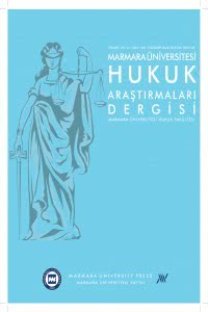EĞİTİMDE ANADİLİN YERİ: ULUSLARARASI BELGELER VE YENİ ANAYASA
Eğitimde anadilin yeri Türkiyede 2011 sonu başlayan yeni Anayasa sürecinde önemli bir tartışma noktasıdır. Anadilde eğitim anadilin öğreniminden farklıdır. Anadilin öğrenimi, dilin gramer ve diğer özelliklerinin öğrenimi için ders verilmesi anlamına gelirken, anadilde eğitim, eğitim sürecindeki bütün derslerin etnik grupların kendi dillerinde olmasını içerir. Anayasanın 42. Mdsi gereğince bugün bu mümkün değildir. Anadilde eğitim talebi ele alınırken, azınlık gruplarının toplumla entegrasyon problemi göz ardı edilemeyecek bir gerçek olarak karşımıza çıkmaktadır. Çünkü bütün eğitim sürecinin anadilde olması resmi dilin öğrenilmesini güçleştirebilir ve herkesin ortak bir dili kullanamamasından dolayı toplumun bir arada yaşama sorunları ortaya çıkabilir. Bu noktada toplumun büyük bir çoğunluğunun konuştuğu resmi dilin azınlık gruplarınca da iyi öğrenilmesi ihtiyacına cevap verecek seçeneklerin değerlendirilmesi gerekmektedir. Bu anlamda eğitimde azınlık gruplarının talepleri ile birlikte yaşamanın gerekleri arasındaki dengeyi gözeten diğer bir deyişle çift dilli eğitime dayanan karma modeller üzerinde durmak gerekecektir. Bu nedenle yeni Anayasanın yapım sürecinde 42. md üzerinde Mecliste derin tartışmalar yapılacağı aşikardır. Söz konusu tartışmaların yürütülmesi sırasında azınlıklarla ilgili uluslararası belgelerin sunduğu alternatifer üzerinde durmak yararlı olacaktır.
Position of the Mother Tongue in Education: International Instruments and New Constitution
Position of the mother tongue in education is an important discussion subject in the Constitution making process that started at the end of 2011. Education in the mother tongue is diferent than teaching of the mother tongue in education. Whereas teaching of mother tongue (or minority language) in education means teaching of the grammar and other features of that language. education in mother tongue means a curriculum according to which all subjects are taught in mother tongue of that ethnic group. Article 42 of the current Constitution does not allow this. When discussing the demand for education in the minority language, integration of the minority groups comes up as an issue that cannot possibly be ignored. Tat is because a curriculum that is entirely in the mother tongue of the minority group can make teaching of the oficial language more complicated, thus resulting in a society where its members do not speak a common language, problems regarding peaceful coexistence can be arose. At this point, alternative solutions for better teaching of the oficial language that the majority of the people speak to the minority groups must be considered. In that sense, mixed model education systems, in another words bilingual education which balance the demands of the minority groups and the need for living together in an integrated society must be emphasized. For this reason, in-depth discussions over Article 42 will obviously take place in the National Assembly during the constitution making process. During these discussions it will be helpful to dwell on the alternatives in the international instruments on minorities.
